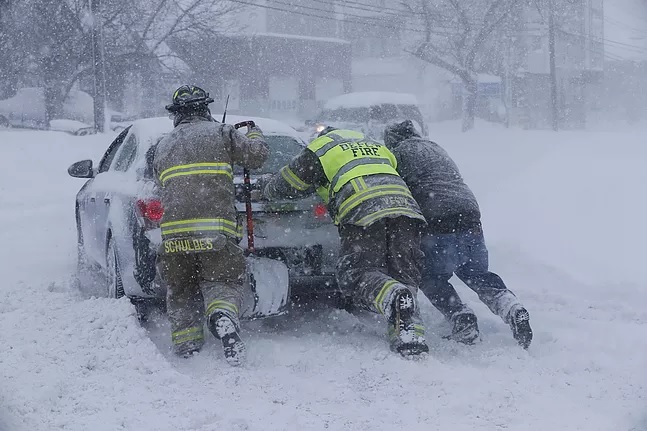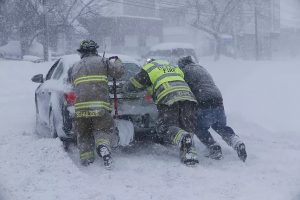 Winter storms, snow, wind chill, frost, ice and extreme cold are a coast-to-coast threat to the United States and Canada. Last winter season major cities as far south as Atlanta and Dallas have been paralyzed by snow and ice. As with any emergency event it is more often than not what you do to prepare that can make a difference in how you manage and survive. There are three key elements to personal and family preparedness:
Winter storms, snow, wind chill, frost, ice and extreme cold are a coast-to-coast threat to the United States and Canada. Last winter season major cities as far south as Atlanta and Dallas have been paralyzed by snow and ice. As with any emergency event it is more often than not what you do to prepare that can make a difference in how you manage and survive. There are three key elements to personal and family preparedness:
- Make a plan and practice the plan with your family and those who depend on you.
- Stay informed and know the weather approaching so you are prepared for whatever Mother Nature throws our way.
- Create an emergency preparedness kit your home and office. Kits are also a great idea for vehicle road travel.
Home Winter Preparedness:
During bad winter weather the primary concerns are loss of heat, power and telephone service and a shortage of supplies if storm conditions continue for more than a day. It is recommended that you have the following items on hand:
- Flashlight and extra batteries
- Battery-powered NOAA Weather Radio and portable radio to receive emergency information
- Extra food and water such as dried fruit, nuts and granola bars, and other food that does not require cooking or refrigeration.
- Extra prescription medicine
- Baby items such as diapers and formula
- First-aid supplies
- Heating fuel: refuel before you are empty; fuel carriers may not reach you for days after a winter storm
- Emergency heat source: fireplace, wood stove, space heater, properly ventilated to prevent a fire
- Fire extinguisher, smoke alarm; test smoke alarms once a month to ensure they work properly
- Extra pet food and warm shelter for pets
Auto Winter Preparedness:
Plan your travel and check the latest weather reports to avoid the storm. Fully check and winterize your vehicle before the winter season begins. Keep your gas tank near full to avoid ice in the tank and fuel lines. Avoid traveling alone. Let someone know your timetable and primary and alternate routes.
It is recommended that you carry a Winter Storm Survival Kit with the following items
- Mobile phone, charger, batteries
- Blankets/sleeping bags
- Flashlight with extra batteries
- First-aid kit
- Knife
- High-calorie, non-perishable food
- Extra clothing to keep dry
- Hand warmers (small disposable packets which are air activated and held in the hand and produce heat)
- Large empty can to use as emergency toilet. Tissues and paper towels for sanitary purposes
- Small can and waterproof matches to melt snow for drinking water
- Sack of sand or cat litter for traction
- Shovel
- Windshield scraper and brush
- Tool kit
- Tow rope
- Battery booster cables
- Water container
- Compass and road maps (don’t depend on mobile devices)


